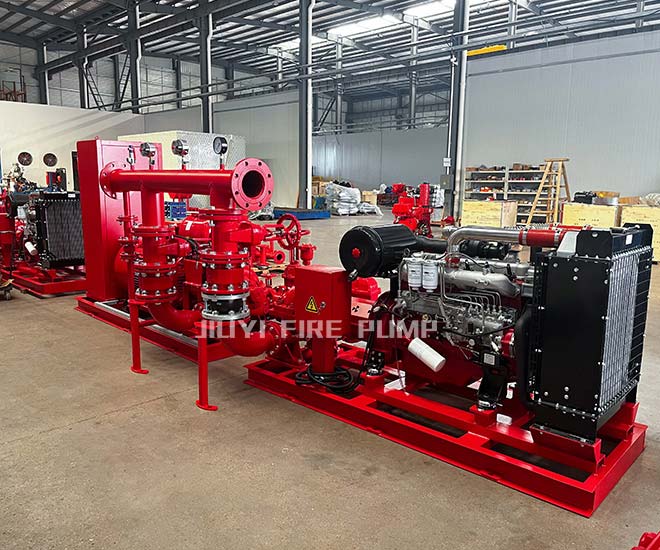
Fire pumps are a critical component of life safety systems in buildings and facilities. They play an essential role in ensuring that adequate water supply and pressure are available for firefighting efforts, which is crucial for protecting lives and property during emergencies. In this article, we will explore the functions of fire pumps within life safety systems, their importance, and how they contribute to overall fire protection strategies.
Understanding Life Safety Systems
Life safety systems encompass a range of features and equipment designed to protect occupants during emergencies, particularly fires. These systems include:
- Fire alarms and detection systems: Alert occupants and emergency services to the presence of smoke or fire.
- Emergency lighting: Guides occupants to exits during power failures or smoke-filled environments.
- Sprinkler systems: Automatically discharge water to suppress fires before they escalate.
- Fire pumps: Ensure that sufficient water pressure and flow are available to support these systems.
The Importance of Fire Pumps in Life Safety Systems
-
Providing Adequate Water Supply
- Fire pumps are designed to deliver the necessary water flow and pressure to fire suppression systems, such as sprinklers and standpipes. This is vital for effective firefighting and minimizing damage during a fire incident.
- In high-rise buildings or large industrial facilities, gravity-fed water systems may not provide sufficient pressure, making fire pumps essential for ensuring that water reaches all levels and areas.
-
Enhancing Firefighter Efficiency
- Fire pumps enable firefighters to quickly access and utilize water from hydrants, reservoirs, or other sources. This capability is critical for effective firefighting and can significantly reduce response times during emergencies.
- By providing a reliable and powerful water supply, fire pumps allow firefighters to focus on extinguishing the fire and rescuing occupants rather than struggling with inadequate water pressure.
-
Supporting Sprinkler and Standpipe Systems
- Fire pumps are often directly connected to automatic sprinkler systems and standpipes, ensuring these systems operate effectively. They maintain the required pressure for sprinklers to activate at the right time and deliver water to standpipes for manual firefighting efforts.
- In buildings with complex layouts, pumps ensure consistent water delivery to all areas, including those that may be far from the primary water supply.
-
Ensuring Compliance with Regulations
- Many building codes and fire safety regulations require fire pumps in certain types of structures, particularly high-rise buildings or facilities with large occupancies. Compliance with these regulations not only ensures safety but also protects building owners from legal liabilities.
- Regular testing and maintenance of fire pumps are often mandated to ensure they are operational when needed. This compliance is essential for passing inspections and maintaining insurance coverage.
-
Enhancing Occupant Safety
- By enabling effective firefighting and suppression efforts, fire pumps play a vital role in protecting occupants during fire emergencies. Their reliability can mean the difference between a minor incident and a catastrophic event.
- Fire pumps contribute to the overall effectiveness of a building’s life safety systems, ensuring that occupants can evacuate safely and that firefighters can contain and extinguish fires quickly.
Conclusion
Fire pumps are indispensable components of life safety systems, providing the necessary water supply and pressure for effective firefighting and fire suppression. Their role in enhancing the efficiency of firefighting efforts, ensuring compliance with safety regulations, and ultimately protecting lives and property cannot be overstated.
Investing in high-quality fire pumps and ensuring their proper installation, testing, and maintenance is essential for any facility committed to life safety. By prioritizing fire pump functionality within your life safety systems, you can enhance the overall safety and security of your building, ensuring that you are prepared to respond effectively in the event of a fire emergency.
